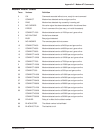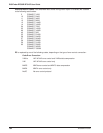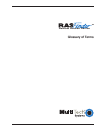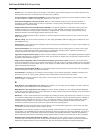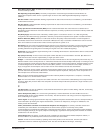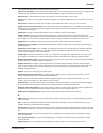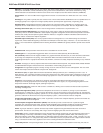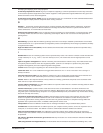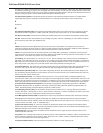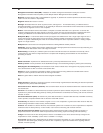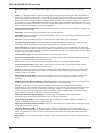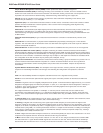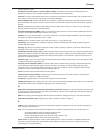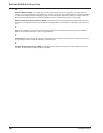
Glossary
RF300E/RF310E 189
developing and deploying frame relay equipment.
Frame Relay Implementors Forum: A group of companies supporting a common specification for frame relay connection
to link customer premises equipment to telco network equipment. Their specification supports ANSI frame relay specs and
defines extensions such as local management.
Frame Relay Access Device (FRAD): A piece of equipment that acts as a concentrator or frame assembler/dissassember
that can support multiple protocols and provide basic “routing” functions.
G
Gateway: 1. A functional unit that interconnects two computer networks with different network architectures. A gateway
connects networks or systems of different architectures. A bridge interconnects networks or systems with the same or
similar architectures. 2. A network that connects hosts.
Graphical User Interface (GUI): A type of computer interface consisting of a visual metaphor of a real-world scene, often
of a desktop. Within that scene are icons, representing actual objects, that the user can access and manipulate with a
pointing device.
H
Handshaking: A process that two modems go through at the time of call setup to establish synchronization over the data
communications link. It is a synchronization and negotiation process accomplished by the exchange of predefined, mutually
recognized control codes.
High-level Data Link Control (HDLC): An ISO standard, bit-oriented data communications protocol that provides nearly
error-free data transfers.
I
Hexadecimal: A base 16 numbering system used to represent binary values. Hex uses the numbers 0-9 and the letters A-F:
usually notated by an “h” (e.g., “4CF h”, read “four charley fox, hex”). The result is that one hex digit represents a 4-bit
value.
Implicit congestion management: A method of informing the terminal that the network is busy. This method relies on the
end-system protocol to detect and fix the congestion problem. (TCP/IP is an example of a protocol using only implicit
congestion management.) See also “explicit congestion management”.
In-band: Refers to the type of signalling over the conversion path on an ISDN call. Contrast “out-of-band”.
Insufficient Ones: A T1 error condition that is logged when fewer than one 1 in 16 0s or less than 12.5 % average 1s
density is received.
Inter Exchange Carrier (IEC): The long distance company (LE) who’s central office provides the point of reference for T1
access. Any common carrier authorized by the FCC to carry customer transmissions between LATAs.
Internet: Refers to the computer network of many millions of university, government and private users around the world.
Each user has a unique Internet Address.
Internet Address (IP Address): A unique 32-bit address for a specific TCP/IP host on a network. Normally printed in dotted
decimal format (e.g., 129.128.44.227).
Internet Protocol (IP): A protocol used to route data from its source to its destination in an Internet enviroment. The
Internet Protocol was designed to connect local area networks. Although there are many protocols that do this, IP refers to
the global system of interconnecting computers. It is a highly distributed protocol (each machine only worries about sending
data to the next step in the route).
Internetwork Packet Exchange (IPX): A NetWare communications protocol used to route messages from one node to
another. IPX packets include network addresses and can be routed from one network to another. An IPX packet can
occasionally get lost when crossing networks, thus IPX does not guarantee delivery of a complete message. Either the
application has to provide that control, or NetWare’s SPX protocol must be used.
Interoperable: Devices from different vendors that can exchange information using a standard’s base protocol.
I/O Addresses: Locations within the I/O address space of your computer used by a device, such as an expansion card, a
serial port, or an internal modem. The address is used for communication between software and a device.
IRQ Level (Interrupt Request Level): The notification a processor receives when another portion of the computer’s
hardware requires its attention. IRQs are numbered so that the device issuing the IRQ can be identified, and so IRQs can
be prioritized.
ISA (Industry Standards Architecture) (pronounced “ice a”): The classic 8 or 16-bit architecture introduced with IBM’s
PC-AT computer.
ISDN (Integrated Services Digital Network): An International telecommunications standard for transmitting voice, video



